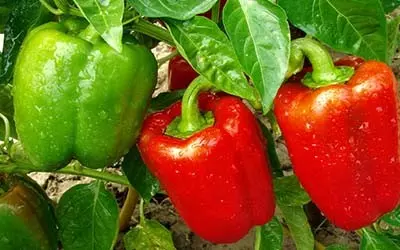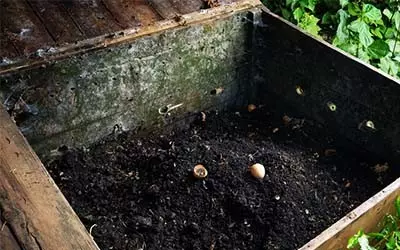When it comes to fertilizing vegetable gardens, nothing can top good old, time-tested organic solutions! Not only are they safe to use on the plants that will feed your family, they are extremely economical.
Organic fertilizers, with their natural nutrients, help build soil fertility and structure in the garden as they are applied. On the other hand, commercial fertilizers are heavy with salts and fillers. Over time, they can actually deplete soil structure. It leads to a never-ending cycle of having to use more and more fertilizer, just to obtain the same results.

So for us, going “organic” is an easy choice. It’s simple, safe, economical, and most importantly – it works unbelievably well!
With that said, whether organic or not, there are a few basic keys to understand about when and how to fertilize vegetable gardens to get the best results.
The When: The best time to fertilize vegetable gardens is within the first 45 days after planting. This is the critical time when vegetable plants need vital nutrients to prepare to flower and produce. Once plants reach past that stage, it is better to stop fertilizing. Too much fertilizer, or fertilizing too late in the season can keep plants producing foliage, and not vegetables.
The How: There are basically two main ways to fertilize organically, liquid and side dressing. Liquid fertilizers are for fast acting instant boosts, while the side-dressing method works more as a slow release fertilizer. When used together, they can really do wonders in the garden.
Liquid Fertilizer Teas
Forget the Miracle Grow! You can safely and effectively power your plants with homemade liquid teas that work unbelievably well for fertilizing vegetable gardens. Liquid fertilizer teas are a great way to give an instant boost to plants. We like to apply them every 14 days in the first month and a half of the garden season. Here are 3 excellent choices:
Compost Tea. One of the best, natural, safest and most inexpensive all-around liquid fertilizers you can use. Compost tea is a simple mixture of compost steeped in water for a few days. The water absorbs the nutrients, and when applied to the plant’s leaves and root zone areas, it is absorbed by the plant.

It is an incredible all-purpose fertilizer. Apply early in the morning or late in the evening to avoid burning the plant in the hot sun. See : How To Make Compost Tea
Worm Casting Tea. Our absolute favorite. Simply soak a 1/2 cup of worm casting per gallon of water in a bucket. Stir a few times a day for a couple of days, and then strain and use. It is powerfully good! And be sure to throw the left over castings into your compost pile!
Liquid Manure Tea. An excellent and free fertilizer, made by steeping, you guessed it – fresh manure! Take a 5 gallon bucket, fill a quarter of the way up with fresh cow, rabbit, chicken or horse manure, and fill with water. Let it steep for a few days, stirring once or twice a day. Then drain and use around your plants root zones, and watch the magic happen!
Side Dressing Fertilizers
Side dressing is simply using an organically substance like compost, green grass clippings or manure around or near plants. They slowly release their nutrients into the soil as they decompose. As those nutrients leech in during rain or watering, they act a slow release fertilizer to your vegetable plants.
Here are some excellent choices for side dressing fertilizers:
Compost. Adding compost around plants as a mulch is an excellent way to give a slow release of nutrients to plants all garden season long. We use this method every year in the garden with great results.
Place a 2″ thick circle of compost, about 12″ in diameter around each plant. You can also side dress crops like beans and corn to help add nutrients to them slowly.
Manure Side Dressing . This is a favorite among many old-time gardeners, and with good reason – it works! Place a shovel-ful of manure near each plant to give nutrients over time.
One word of caution, keep the manure a good 4 inches away from the stems of plants. If it is too close to the stem or foliage, it can burn the plants because the fertilizer is too “hot” with nutrients.
Worm Castings. Spread a few teaspoons of castings around the root zones of each plant. As they leach down over time, they will give off a perfect blend of slow release fertilizers to your garden plants. Worm castings are truly amazing – they work unbelievably well in both liquid and dry form.
Green Grass Clippings. Fresh-cut, bright green grass clippings are excellent to put right around the base of your vegetable plants. While green, they leach out good amounts of nitrogen to the root zones of plants. They also make for an excellent weed block for the garden.
Happy Fertilizing and Gardening – Jim and Mary! If you would like to receive our DIY, Gardening and Recipe articles each week, sign up via email at the very bottom of the post You can also follow us on Facebook, Twitter or Instagram to receive all of our latest tips and articles. This article may contain affiliate links.
